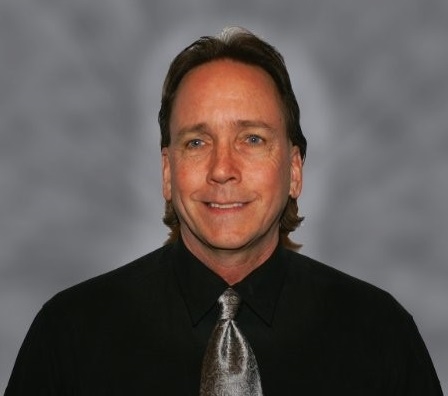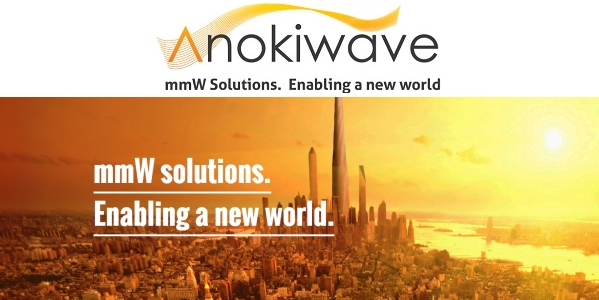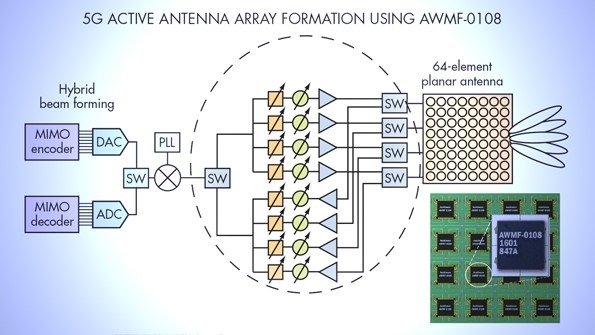
David Corman is the Chief Systems Architect at Anokiwave. He has 34 years of experience in RF microwave, millimeter wave, and analog engineering including system design, module design, and RFIC/MMIC design through 94 GHz. His primary focus at Anokiwave is the achievement of higher levels of functional integration by combining system engineering with enabling solid state integrated circuit technologies including GaN, GaAs, SiGe, and CMOS. Mr. Corman holds a Bachelor’s degree in Electrical Engineering from the University of Kansas and a Master’s degree in Electrical Engineering from Arizona State University. He holds over 45 patents worldwide.
Q. Can you tell us a brief history about Anokiwave? And how the company has evolved over the years?
David Corman: Anokiwave was founded in 1999 and operated as a design services company until 2013. During that time Anokiwave designed a wide range of highly integrated silicon RFICs for many commercial and aerospace and defense customers and matured its intellectual property portfolio focused on the higher microwave and millimeter wave frequencies.
In April 2013 the company was reformed and began repositioning to a product company. A new CEO, Chief System Architect, and VP of Operations joined the company to guide the development of new products. Since that time the company has added many new RFICs to its standard product offering with particular focus on beam forming RFICs for active antenna applications such as RADAR, satellite communications, and 5G communication infrastructure.

Q. In 2013 you moved from a Design/Services Company to a Product Focused company. What drove this shift? Are you still providing Design Services? What would be the % Break up of Product vs Design Services for Anokiwave as a function of revenue?
David Corman: The shift away from a design services company was done to allow the company to scale in size and establish recurring product revenue. The company no longer offers design services but rather focuses on developing its own products as well as products that are requested by customers who assist in the cost of the development of the RFICs and then commit to buy the RFICs in production.
Q. What market segments are you currently targeting? Who are your prospective customers?
David Corman: Our market segments include aerospace and defense, satellite communications, and 5G communications infrastructure. Currently the defense business is the largest segment for the company but 5G infrastructure is on a fast growth path and is expected to be the largest segment by the end of 2017. Anokiwave has many customers around the world with North America being the largest region at present but with Europe and Asia Pacific regions growing rapidly.
Q. What are your Core Focus Areas for Product Development?
David Corman: The bulk of our product focus is on beam steering RFICs for active antennas, i.e. antennas that steer beams electronically with no moving parts. We approach the development of new products from a system perspective where we put ourselves in our customer’s shoes and see what we can do at the RFIC level that will make their products and systems more efficient. This has proven to be a very effective method for the company.
Q. Active antennas seem to be a major focus area for Anokiwave. What is your view on this technology and why did you decide to focus on this? Can you tell us about your active antenna architecture?
David Corman: Active antennas are indeed a major area of focus for the company. Antennas that use electronically steered beams have been around for decades in the aerospace and defense industries. But the traditional solutions have used GaAs and more recently GaN solutions which are bulky, expensive technologies and offer very limited levels of functional integration.
In contrast Anokiwave specializes in highly integrated silicon ICs and has been designing beam steering ICs for over 10 years now. Since silicon offers the ability to integrate RF, digital, and analog functions on a single IC, all of the requisite functions that are needed for active antennas can now be placed on small silicon devices that reside within the radiating element lattice of the active antennas thereby enabling low profile, low cost, planar solutions. These are exactly the antenna solutions that are needed in the markets that we address. Markets such as 5G infrastructure are projected to require unprecedented numbers of active antennas. Thus, cost effective, highly integrated silicon solutions are necessary for a successful roll-out of the new systems.
Since Anokiwave has spent many years developing skills and intellectual property for beam steering ICs, it is natural for the company to attack the large and emerging active antenna markets.
Q. At the IMS 2016 you launched the first silicon mm-Wave core chip for 5G at 28 GHz. Can you tell us more about this product? How is the market response for this product?
David Corman: Anokiwave’s AWMF-0108 is the world’s first commercially available IC designed specifically for 28 GHz 5G infrastructure applications. Since its introduction in May 2016, the reception has been exceptional with world-wide interest. The device supports four Tx/Rx radiating elements, includes all requisite beam steering controls for 5 bit phase and gain control, and operates in half duplex fashion to enable a single antenna to support both Tx and Rx operation. The device provides 24 dB gain and +9 dBm output power during transmit mode and 31 dB coherent gain, 5.0 dB NF, and -28 dBm IIP3 during receive mode. Additional features include gain compensation over temperature, temperature reporting, Tx power telemetry, and fast beam switching using eight on-chip beam weight storage registers. The device features ESD protection on all pins, operates from a single +1.8 V supply, and is packaged in a 48 lead 6x6 mm QFN package for easy installation in planar phased array antennas.

Q. What do you feel will be the main challenges in the Implementation of 5G? When do you expect this technology to roll out?
David Corman: In our minds the biggest challenges are that the 5G standards are still evolving but at least global frequency plans are starting to become clearer. The FCC recently opened multiple bands in the US (27.5-28.35 GHz, 37-38.6 GHz, 38.6-40 GHz, 71-76 GHz, 81-86 GHz). Additionally there is a large installation challenge for the high number of 5G infrastructure cells that will use the active antennas. It will take time for this roll-out to occur but the big players are working hard to get this kick started with early deployments starting in 2018 and full deployment by 2020.
Q. Different countries have different approaches towards the implementation of 5G at different frequency bands. How is Anokiwave addressing these developments? Are you sticking to the 28 GHz band or working on other frequencies as well?
David Corman: The AWMF-0108 is our inaugural part for 5G but other frequency bands will be addressed going forward. As you correctly point out, other parts of the world are allocating different portions of the millimeter wave spectrum for 5G. For example Europe is looking at 24.25-27.5 GHz, 31.8-33.4 GHz, and 40.5-43.5 GHz while Asia Pacific is looking at 26.5-29.5 GHz (Korea), 27.5-29.5 GHz (Japan, China), and 24.25-27.5 GHz (China). Anokiwave will continue to address these emerging needs with new products in the future.